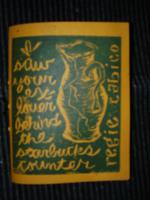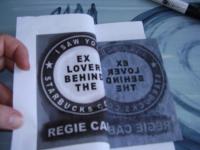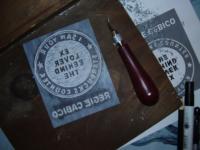Wednesday, August 31, 2005
Evacuating a Metropolis? My Heart Goes Out
And after 9/11, folks down near the site had to relocate, but it wasn't the whole city. I don't want to trivialize that time, it was one of the hardest, most surreal times of my life, and certainly those who lost people are still feeling the effects. But it was so sudden, and then the rest was recovery/cleanup/reaction, it wasn't a slo-mo deluge like they have down in New Orleans. I did not feel trapped in the city. I chose to stay, even fell in love with it here a little.
My prayers go out to folks on foot in the snake-infested water, people waiting on roofs, and the masses getting bused to Houston. And like any animal lover, I worry about the pets too. Leaving in a hurry often means leaving them behind.
Here, on CNN, are some emails they've collected, and there will be more. I find it most interesting to hear about it from the people themselves. Of course those in the middle of it now have no access to internet, but I'll be watching their survival stories as they emerge.
Tuesday, August 30, 2005
Big Fat Press Tiptoes Out of Retirement

My poet pal, Regie Cabico, wrote me with great news: he has been appointed artist-in-residence for NYU's Asian/Pacific/American Studies Program and Institute for 2005-06. Way to go Regie! He is among the first people I published on Big Fat Press, my little chapbook operation, and long story short, he talked me into doing reprints of his 1997 title, I SAW YOUR EX-LOVER BEHIND THE STARBUCKS COUNTER. Here's a blurry photo of the 1997 book.
We decided to make it a 2005 edition, and since I couldn't find the plate for the old cover, we're doing a new one. I thought I'd share the process, since this is the proj-aholic's fun part of home-publishing. (The reason I quit doing it was the other crap--bookkeeping, distribution, etc., plus, I decided I had more invested in being a writer than being a publisher.)
But now I'm on a craft/nostalgia kick making the new books. I'll share with you the process so far:
1. Ok, the editorial stuff, well, we did most of that already. I updated copyright, bio, acknowledgments, and also-published pages. The rest I left alone. Had a nice meeting with Regie at one of the many Starbucks at Astor Place, where we congratulated each other for keeping it real.
2. The new cover. They are linoleum block prints, which I do on plain old floor vinyl. Cheap, fun. I decided to go for a look like someone drew a fake Starbucks logo in chocolate syrup. Kind of like a choco-monoprint. (Aside: I love the monoprint, especially when done in unorthodox media. Check out these "motoprints," made from used motor oil, by my old UCSD classmate Perry Vasquez.)

3. But I'm making a lot of 'em, and I ain't the draftsman Perry is, so I started with a computer. Designed the "logo" in microsoft draw/word and then tranferred it to the linoleum with a "blender" pen.

4. Then the carving. I generally do this while watching TV. I use a wooden frame so I don't have to hold the plate with my left hand and get bloody jabs all over it.

Suspense! The proof will be in the proof, which does indeed look like chocolate. I'll get my act together and photograph it, along with the binding process, soon, I promise.
One Fat Ass

OK, this picture prompted us to make a vet appointment for Boo. The diet is not working. They say obesity is becoming the #1 health problem in America, and here is proof, one very American cat.
For scale, here he is next to Angus, the feral (Vince's brother) we adopted last fall. Time for Boo to get a personal trainer.

Sunday, August 28, 2005
Silverblatt, Moody, and “The Stench of Fiction”
He has three archived interviews with Rick Moody, which I return to often; Moody’s take on craft is so instructive. Moody’s essay on mentors in The Atlantic’s annual fiction issue inspired me to re-listened to these archived shows, and fell in love all over again with the most recent, a discussion of Moody’s sort-of-memoir THE BLACK VEIL, among other things.
THE BLACK VEIL is Moody’s meditation on America, his own literary heritage, and in particular an ancestor, “Handkerchief” Moody, a New Englander who covered his face with a veil to express his shame. The ancestor-Moody was immortalized in a Hawthorne story, and is a means for Rick Moody (and Silverblatt) to explore the ideas of veils, shame, and fiction.
In the interview, Silverblatt reads the closing paragraph of Moody’s award-winning short story “Demonology,” which dispenses with the fourth wall entirely, giving a litany of “shoulds” on how best to write about his sister’s death: “I should fictionalize it more, I should conceal myself. I should consider the responsibilities of characterization...I should make Meredith’s death shapely and persuasive, not blunt and disjunctive…I should address her here directly (these are the ways I miss you)…”
(It’s a beautiful, long-sentence, true-Moody paragraph and I’m ruining it by quoting fragments and dropping in elipses instead of commas. There’s no substitute for hearing it, or reading the whole story.)
Silverblatt reacts to the passage by circling back to the veil:
Silverblatt:
It feels as if these are something of the pulls of your writing recently: the impulse to tear away the veil that makes something into fiction, and one's equal impulse that without it, it hasn't been fiction.
Moody:
Yeah, you know Brad Morrow said this thing to me a little while ago about how he could always see fiction coming, and that it had this certain reek. He referred to it as the "stench of fiction." What I think he meant was that there are certain codes, you know, in the well-made, conventional, contemporary fiction that you can see a mile off. And when you see those codes, you just kinda want to do something violent to stir the pot up. You know? So what I think I'm doing is that I'm spinning around the spot that's the very fundamental origin of what literature is right now. This sort of constant, circular orbiting energy around how do we treat of our time here on the planet, do we write about it directly, or do we strategize? Do I have to be perverse in the sense that I have to find some trope in order to express what I have to express? Or can I just express the thing? Well, turns out that you can't solve the problem somehow. It's kind of a loop, I find, and an incredibly fertile one for me.
And the interview closes with Moody reading another litany (he’s so good at that) from THE BLACK VEIL. I’m so glad these two minds are on the planet and having this discussion in a place where I can hear it. Makes me want to "do something violent to stir the pot up" too, dive into this "loop" and feel the spin.
Saturday, August 27, 2005
The Lair of a Serial Killer

Well, I've discovered a crime scene in the back yard. I decided not to upload any forensic photos, they are just too disgusting. So here is a mugshot of the prime suspect.
The other morning, I went to walk the dog, and discovered that Vince, our head Feral Colonist, had left a young bird gasping for breath near the front stoop. King Vince sat proudly beside it. The bird was missing its wings.
The dog was too curious so I moved him along, and when I came back to consider putting the bird out of its misery, it was not there.
This week I also went to a secluded corner of our back yard to turn the compost. And gathered, all around the composter, was a collection of wings. A couple pigeons, and even a butterfly. All artfully arranged. Someone, and I think I know who, is a collector.
I hope the little bird is in a better place.
Projarama: Mulch Experiment

Every gardening thing I've been reading lately says tilling is old school. As a way to get rid of weeds, all it does is spread seeds and tubers. As a way to aerate and prepare the soil, it works well, making a perfect bed FOR THE WEEDS. And me, that's exactly what I've been doing for 3 years.
In her Lasagna Gardening book series, Patricia Lanza advocates building up instead. She had a brain fart when walking through a forest one day: mother nature doesn't till. She relies on fallen organic material, worms, and bugs to do the job of improving the dirt. (Ever seen a nurse log?)
Lanza's method: pick a spot where you want the garden, stake it out, then start layering stuff on top of the lawn or whatever is there: newspaper first, as a weed barrier, then peat moss, then green compost material, then brown compost material, then woodchips or another traditional mulch. Let this sit through the winter, and in spring, just scatter seeds right in the layers, or pull some layers aside and drop the plants in right on top of the newspaper layer.
I decided to start with a small patch and see if it works for me. Two layers so far: wet newspaper (Ah, all the text that doesn't get read! There is so much of it in the world! Are we writers crazy or what?) and peat moss, right on top of the grassy weeds that were getting ready to flower. Hopefully the critters will not dig.
Friday, August 26, 2005
More Homework: The Inactive “We” in Steven Millhauser’s “The Knife Thrower”
In my ongoing research on the “we” narrator, I just ran across Steven Millhauser’s THE KNIFE THROWER AND OTHER STORIES, a collection in which not one but several pieces are narrated by the classic “town” collective.
Are narrated by. There I go again with the passive voice. I’ll slap myself with a ruler later. But I notice that the effect of Millhauser’s “we” is similar to the effect of passive voice in a sentence:
(a) it hides the identities of the culpable
(b) it simultaneously implies “no fault”
(c) it softens the characters’ intentionality
(d) it creates confusion about whether subject (actor) or object (actee) deserve more emphasis and attention.
I mean none of this as a value judgment. In the title story, Millhauser’s collective narrator is literally an audience, with a generic spokesperson. They are watching the performance of an itinerant knife-thrower, whose tricks escalate from mundane and disappointing to morbid and thrilling.
The knife-thrower, through his spokesperson assistant, finally coaxes members of the audience to come up and receive his “mark.” The non-volunteers are passive to the extreme, and wonder whether it’s really bloodlust or politeness that keeps them from halting the proceedings.
Reminds me of the performances of Chris Burden back in the day—the shot in the arm, the Volkswagen crucifixion. And especially the one where he remained prone on a gallery floor until someone stopped him: Burden’s audience simply trusted him and his right to torture himself, feared breaching the contract between artist (driver) and audience (passenger). A guard, fed up, finally handed Burden a glass of water, ending the performance.
Mentors often caution beginning writers—myself included—against using passive narrators. Whether they are at the center of the action, victims to their externally-generated fate, or on the periphery, tiny observers with no impact on the world, the result in inexperienced hands is often the stifling of any opportunity for emotional resonance. What brings life to stories is the choices their characters make, and if the characters make none, the narrative falls flat.
But inaction is a choice in Millhauser’s piece, which gently poses the question: does our passivity define us? Does it make us smaller or bigger? If we are not part of the solution, what are we? The spokesperson admits, “we had been entertained by our knife thrower, had we not, we had been carried a long way, so that even as we questioned his cruel art we were ready to offer our applause.” Someone finally volunteers to receive the ultimate “mark,” and on leaving the theater, the spokesperson relates (using the passive voice quite effectively):
…when the pros and cons were weighed, and every issue carefully considered, we couldn’t help feeling that the knife thrower had really gone too far. After all, if such performances were encouraged, if they were even tolerated, what might we expect in the future? Would any of us be safe?
The invisible audience, protected in the darkness of the auditorium, becomes a metaphor for more serious forms of collective passivity. Puts me in the mind of Pastor Martin Niemoller’s famous words: “First they came for the Jews, and I did not speak out because I was not a Jew.” The town’s passivity itself is the subject of the piece, and even—maybe I’m reaching here—throws a spotlight on another “we,” his passive readers, who are probably quite practiced in being led.
Wednesday, August 24, 2005
My Homework: Judy Budnitz’ “Nadia”
(For those who don’t know, nypl.org is available to anyone, and free to those who live or work in the 5 boroughs. It’s my new Amazon. And Netflix. All you have to do is go online and order any borrowable material, then keep checking the account, and when the item comes in, go to the local library to pick it up. Confession time: I have my library card number memorized, but not my mastercard. This is helping greatly in our ongoing book-clutter problem at the house.)
Back to my autoassignment. In her collection, NICE BIG AMERICAN BABY, Judy Budnitz’ “Nadia” does some of what I am exploring. If you haven’t read the story, you might want to stop here, there are spoilers.
The teller is a spokesperson from a group of women who are not-so-passively observing their friend Joel and his new mail-order bride. I initially thought it didn’t even qualify as “collective narrator”—the speaker is indeed an individual—but Budnitz accomplishes some subtleties of group identity with the voice that are worthy of attention.
“Nadia” is the teller’s nickname for the bride, the first clue to a group/individual identity schism. The narrator says she is changing the name to protect her, “She came from a place where that is necessary.” But the choice of name is fraught with us/other: “Nadia brings up images of Russian gymnasts. Or is it Romanian? Bulgarian?” While curious about Nadia’s history, the speaker is also quick to lump her into an Eastern European cliché, having no other categories to access. The altruistic, protective impulse is consistent in the story, in moments when the narrator speaks for herself. But when the friends get together, the groupthink takes over.
When speaking for the group, the curiosities and projections border on vulgar. Alone with the groom: “We asked if she was different from the women here, if she had a way of walking, an extra flap of skin, a special smell. Did she smell of cigarettes, patchouli, foreign sewers, unbathedness?” To the collective identity, Nadia’s an alien, a puzzle, a project. “Then she began smirking in an awful closed-lipped way so we thought she didn’t like us. It took us awhile to understand that it was her smile. Eventually we discovered the reason: her teeth were amazing, gray and almost translucent, evidence of some vitamin deficiency.”
But the moments of “I” expose a conscience and insecurity that would probably never be confessed to the group. Considering the groom’s kindness in bringing Nadia from her war-ravaged country, the narrator wonders if she should adopt a child. A haunting memory of her sister’s pet rabbit prevents her: “I remember holding him tightly to my chest until he stopped kicking. I was keeping him warm, but when I let go he was limp. We put him back in the cage for our father to find. I still dream of white fur, one sticky pink eye. I worry I might do the same to a baby.”
The narrator suggests that all members of the group are acting from the same conscience, but when the heads get together, nothing works. The women attempt to help Nadia overcome depression and fever with their idea of Eastern European cure: a dip in the icy river. Hidden agendas emerge as the idea goes awry:
“It was an accident.”
“It doesn’t look like one.”
“I can’t be involved in this,” I said.
“Why?”
“Well,” I said, “you know how Joel and I…how we used to…People might think I had a motive. They’d think I wanted to get rid of her.”
“That’s no reason.”
I looked at them all and wondered, not for the first time, how many had slept with Joel too.
Funny how the narrator truly protects the identities of her groupmates, none of whom are given names, nick or otherwise. Maybe her conscience is another mask, one of confession, that she gives us, to justify her unacceptable behavior in the mob context. No different than the group goal of “helping” the poor bride, but specific enough to give clear impetus. The narrator’s authority as spokesperson for the group is never faulty, but her altruism turns out to be a tenuous platform.
Budnitz made a wise choice in the abrupt ending: she gives Nadia the last word, reinforcing that the “truth” of the story is far from the account that the narrator provides. I find the ending satisfying. Leaves me wondering what the same story would be from Nadia’s point of view, but doesn’t make me wish it was executed any other way.
Strategies to recycle/steal in my story? I like how, by picking a self from the mob, Budnitz manages to amplify the denial necessary in groupthink. Had she gone with “true” collective narrator, making the classic “town” do the talking, she would not have brought in the individual obsessions and insecurities that fuel mob behavior. And had she made the narrator more generic, it would be far harder for me to identify with the actions of the group.
Time to hit more books. I’m getting a better bead on this idea.
Thursday, August 18, 2005
My Ass Loves Vicarious Thrills
Moorishgirl is giving a play-by-play of her first waitership at Bread Loaf.
Myfanwy Collins has posted several inspirational reports from the Squaw Valley conference, with links to participants.
8/26 ADDENDUM! Just discovered Cliff Garstang's excellent Bread Loaf notes on Perpetual Folly. It sounds really exhausting. In a good way. They do warn participants to pace themselves.
Wednesday, August 17, 2005
Will Someone Please Call This Meeting to Order?

A rare moment with the whole tribe of six on the back stoop. Clockwise from top left: Rrose, doing some yoga, her sons Elvis Vegas and Elvis Memphis, Vince, Junior, and Marcel. Give us some kibble already, lady!
Last night my husband was playing some piano music in the basement, Mozart I think, and little Elvis Memphis tiptoed up to the basement window to listen. That was a first! Who knew cats cared about music?
The Godfather

Here's Vince, caught in a moment of contemplation.
Vince had an abscess last week, on his shoulder. Felt like he had a tumor there. It burst open, leaving a hole about the size of a dime. Our vet had told us that otherwise healthy cats have abscesses normally in the wild, usually from cat bites, and they heal just fine. So we decided to watch him instead of taking him in. His immune system worked great; he is totally healed!
Tuesday, August 16, 2005
My Ass is Struggling with "Collective Narrator"
My first conscious experience of a collective narrator was Jeffrey Eugenides' THE VIRGIN SUICIDES, which is told by a group of high school boys. It took me several pages--maybe even a chapter--before I went, "what...hey! Who's speaking again?" I reread, then finally had to have it explained to me by a book review. Then I was intrigued, then enthused, and finally hooked.
I found the device again a few years later in Alice Elliott Dark's "Watch the Animals," a short story told by a town observing its most unsocialized citizen. In the notes section of the 2000 O. HENRY AWARDS anthology Dark's explanation struck a chord:
"It took a while for me to decide on the point of view. As I fooled around with scenes, though, the story became more about the community than Diana, and its voice emerged. Diana, in turn, got more fabulous and contrary and eccentric. I worked on the ending until it was both a transcendent moment for the group and a funny portrayal of how quickly people revert to type after they've been generous..."
Yes, it's insular, and a little insecure, too. It's the right voice when group identity is a bigger deal than individual identity. Mob mentalities, the many zeroing in on the few, where a false strength comes from banding together and judging "other." Or, like scenarios more familiar to me: small groups of freaks who find solace in each other when the world at large is too cruel. As I began composing "Welcome to the Pleasuredome," a story about a clique of high school drama geeks, my gut told me that collective narrator was the right choice.
Let's just say it didn't get unanimous raves in workshop. That's cool, that's what workshop is for. But my gut is still telling me it's the right idea for the story. Is it possible to make a silk purse out of this thing?
Time to dissect some examples. On my Google foray, I discovered this essay, "We the Characters" by Laura Miller, in which she observes:
"Modern readers find collective first-person narrators unsettling; the contemporary mind keeps searching for the familiarity of an individual point of view, since it seems impossible that a group could think and feel, let alone act, as one."
She cites writers who have formed and solidified the convention of first-person-singular--Nabakov, Roth--and proposes:
"Truth, these writers suggest, is slippery and protean, and authenticity can be found only in individual experience. Broader claims to authority are suspect."
While I want to gain reassurance from this--it's not me! It's them! My damn readers! It's just an acquired taste!--Miller also points out what's becoming painfully obvious to me:
"In clumsy hands, it may seem merely a stunt, or in the case of Ayn Rand's 'Anthem,' a novella about a collectivist dystopia, drearily tendentious."
Feeling properly put in my place, I 'm taking stock. I want to rescue this story without the 3rd-person cop-out (which incidentally, turns their version of "Our Town" into "Their Town," not quite the same ring). So, off to the library I go, to check out more examples, and dissect, and see exactly HOW these writers pull it off, if they do. How does one give a group's voice authority and clarity? I'll skip the Rand, but will take a peek at the following, which I've heard are 1st-plural telling:
books
Joan Chase: DURING THE REIGN OF THE QUEEN OF PERSIA
Kate Walbert: OUR KIND
Tova Mirvis: THE LADIES AUXILIARY
stories
Ha Jin: "The Bridegroom"
William Faulkner: "A Rose for Emily" (the classic, according to John Gardner)
Judy Budnitz: "Nadia"
Work is cut out for me. I'll check back later with my "scientific observations."
Monday, August 15, 2005
But I Didn't Really MEAN to Plagiarize
Here are some shocking examples.
What if she's telling the truth? Bloomsbury made the right choice, but I for one see how it could happen. Ever try to hum an original tune? It's hard, if you have a memory for music. I'm just glad I have no memory for text...
Friday, August 12, 2005
More C.A.P.--Computer-Ass Poetics
It gives you the choice, a 100-word summary, or 500-word, or whatever percent of the manuscript you desire. I chose 100 words, for kicks.
I’m not exactly sure what it gave me, but it did tickle my textual funnybone. It seems to grab the shortest, shittiest sentences, creating a staccato effect, a new poem in itself.
And now, I give you my collaboration with Microsoft Word:
A WHOLE NEW LIGHT STREAMING FROM A HORSE’S ASS
Right is right. Right Cherie?” People. “People.” Right on.
“Yeah.” Riff
“Hey!” Riff
Magenta, Laura, Rocky, Stuart. “Rocky?” “Hey, hey.” “Sorry. Yeah right. Beer Time.” “Mom?”
“Hey.”
“Hey.”
Right MARY? “Hey! Hey! Yeah.” “Hey!” “You’re right!” “Karla.” Topper. “Topper.”
“Topper!” “Hidden, right?” Hey! “Yeah, right.” “Olga.” “Olga!” Hey! Fritz is right.
“Right, Maddie! Fritz is right.” Right? Your face. “Helen? Helen?”
Bea didn’t ask. Bea was stricken. Bea didn’t answer. “Bea.” Bea couldn’t sleep. Bea shut her eyes.
Nina! Bea, Sadie’s a survivor. “Mom?” “Nina.”
“Mom!” Bea panicked. “Mom, hey. Mom. Mom. “ “Nina! “Bea.” Bea’s hand grew bolder.
A Tree Falls on its Ass in Brooklyn
Tuesday, August 09, 2005
Our Very Own Backyard Prison Gang

Clockwise from top left: Elvis Vegas(m), Junior(f), and Marcel(m) with their gangland eartips
Our city is chock full of homeless cats, who make more homeless cats. And the offspring are truly wild creatures, who multiply like rabbits. I was shocked to learn a pair of breeding cats, which can have two or more litters per year, can exponentially produce 420,000 offspring over a seven-year period.
When we moved to this neighborhood 3 years ago, I noticed four wild cats--two gray, and two tabbies--hanging out in our unlockable garage. They liked our yard, but didn't like us, and left plenty of stinky pee on the exterior walls to let us know.
One morning we went to get in the car and there was a tabby sleeping in it! He bolted, but we realized he had probably been in the car for at least 24 hours--since my husband had unloaded groceries--and even gone on a beer run with my husband. We figured he was reaching out.
I noticed he was missing half of his left ear, so I called him Vincent. When we started feeding him, word got out. Another cat, Marcel, also had part of his ear missing. I wondered if this was more than a battle scar, and decided to do some research.
I learned that eartipping is the universal signal for a neutered feral cat. It makes sense--the marking is permanent, not harmful, and very visible. You can maybe get close enought to a male to see if he is fixed, but not a female. It's way better then putting her through the trauma of trapping and anesthesia, only to learn that the cat is already sterilized.
We realized quickly that there were three other regulars--the other tabby (Angus), the other gray (Rrose), and a tiny kitten (Junior) who did not have their ears tipped. What's more, Rrosie appeared to be pregnant. So off to a Neighborhood Cats class I went. I learned that the females have it worst, often kept away from food by territorial males, and since all their calories go to feed their young, they basically starve. I also learned that if a cat looks pregnant from ten feet away, she is probably days away from delivery. Sure enough, Rrose disappeared, to some secret spot to have her babies.
Meanwhile, Angus became friendly. Even needy, following the common pattern of lower-echelon ferals when they figure out that people are safer than other cats. He had a big abscess on his abdomen, which ruptured, looked like a lemon-sized hole in his belly. So he came inside, got neutered and tested for feline leukemia, and became our cute little cross-eyed buddy. The abscess healed, and we decided to keep him inside.
And then three adorable round white-and-gray kittens started following their skinny mother Rrose to the backyard food bowl. We named them Elvis, collectively, because it was impossible to tell them apart. They seemed to be surviving winter OK, but I started having nightmares about our backyard overrun with hundreds of cats and decided to get cracking. When the kittens were about 5 months old, we borrowed traps and managed to catch all Elvises, Rrose (now pregnant again), and Junior. We cared for them, in covered traps, in our basement, making sure they were healthy enough for surgery. Everybody went to the ASPCA Cares mobile clinic and came home without parts. (And yes--they do abort the unborn in the process. So this is a choice every feral colony caretaker has to make. I wasn't 100% sure about it at the time, but Rrose is now thriving, so I think I made the right choice, after seeing how skinny motherhood made her.)
We kept them in the traps for a couple days after surgery, then let them go in the yard, like Born Free. The whole process, from trapping to release, took about 10 days.
The unanticipated benefit (other than less smell, less fighting, and less offspring) is that neutered, they are much more friendly with us. Junior likes a good scratch now, and Rrose and her surviving two kittens (one lost to a car) are inching closer to our hands. Everyone likes playing with string and twigs. Maybe they will eventually be adoption candidates. In the meantime, we doing our best to look after their nutrition and safety.
And Vince is still the patriarch and ambassador. He cuddles with us, but also guards the yard. Occasionally he will go all the way around the block when with us when we walk the dog, which amuses neighbors. "Hey...is that your cat?" "No, just a friend, who likes to go on walks with us."
We have seen no new kittens this summer (knock wood). The neighbors probably think we are crazy for feeding them but who can resist when they look in the back window like that? Occasionally we throw catnip parties and Rrose lets her true colors show, rolling in the leaves, ecstatic dancing. She is a true flower child.
Ass Clown

From Queen Elizabeth to Bozo the Clown.
Good news all around. It took a biopsy and several dermatopathologists, but Wilbur's skin diagnosis finally came in. We were worried that it would be Pemphigus Vulgaris (vulgar indeed!), a horrible autoimmune disease that attacks the muco-cutaneous junctions (like his butthole and his pecker), but turns out it is a rare bacterial infection that happens in shepherds (and their unique variations). So instead of a lifetime of chemotherapy and stressful frequent visits to the doctor (you should hear this drama queen scream), it will be 60 days of heavy antibiotics and baths.
The antibiotics aren't so bad. He thinks he's getting cream cheese every morning because he deserves it.
And my sister in law sent us this groovy soft e-collar. It's not a fortress, he can shake it off if he really wants to. But mostly he just puts up with not being able to lick "down there." Maybe because he knows he is stylin' in his camo gear. And he can eat, drink, and sleep more comfortably.
Some Scrappy-Ass Summer Volunteers

I didn't have time to plant annuals this year, but these 8-footers chipped in and planted themselves anyway.
Gardening is all about learning, and this year I learned that if you take a year off from planting, it ain't the end of the world. We'd been meaning to replace the rotten fence on the side of the house, so I left that area alone completely. But the sunflowers had another plan. I guess the squirrels didn't get all the seeds last year.
Other volunteers were morning glory, which are now becoming an attractive nuisance, making their own trellises on hosta stems and rotten fence and even a stick I leaned up against the house. And I was surprised one evening to find Thai basil growing in a flower box on our back stoop.
Next year I may try to rein it in, but this year, I'm enjoying the wild action.
Proj Rock! The Chalkboard Fridge
One step beyond the magnetic poetry thing!
I was at the hardware store and on impulse bought some black chalkboard paint, with no clue whatsoever where it would end up. My husband chimed in: what about the ugly-ass fridge! It came with the house, has broken shelves, and we were never quite invested in it--until now!!
I just taped the edges and rolled the stuff on. It bled a little around the edges into that faux leather crinkle texture, but it's kind of a cool feathery effect. Now it's time for the real art to begin! (Or poetry!)
Thursday, August 04, 2005
Sticking My DIY Ass on the Soapbox for One Minute
Have we writers been that suckered by the media that we only find legitimacy through it?
Okay, I don’t want to appear vain, so I am avoiding vanity presses. And if you run the numbers on the Publish-On-Demand route, there is no way a writer can make a living (another questionable index of legitimacy). Sure, you get all of the profits, but the only way a young unknown can pay a mortgage as a writer is to get a huge advance. And why on earth would I get my hopes up on a huge advance?
So, baby steps, the tiny advance leads to the mediocre advance which leads to the huge advance. Or, in PublishersMarketplace parlance, “nice deal,” “significant deal,” etc., each with its own corresponding number range. It feels too much like work. I remember when this used to be fun.
When I had cobbled together a clean draft of my novel, THE GLORY HOLE, I decided the best way to get feedback would be to print up 20-30 copies, bind it, and hand it out to my friends. It worked. I did the “publishing” at home, using the coolest software package ever, Blue Squirrel’s Quickbook which throws the pages into a pdf with correct fronts and backs, four pages per sheet or whatever you want. I “bound” them with a huge stapler they have at my job. On the cover was a note: please comment, pass it along, etc. The feedback I got was invaluable, helped me to have the courage to cut 20K words, and to figure out who the natural market might be. And my friends didn’t have to lug around a ream of paper to do it. They could even read it on the subway. And trust me, the format didn’t hinder their critical abilities.
Quickbook was one of the best $50 investments in my writing I have ever made. Now I use it to print all drafts, cuts down on paper usage by 75%. I also use it for the texts from my writers group and online workshops. The booklets are handy, light, and portable.
Now I have a full draft of LIGHT STREAMING FROM A HORSE’S ASS in front of me, and I’m considering the same thing, only using today’s cheap POD technology. A great coffeehouse here in Brooklyn, VoxPop (http://www.voxpopnet.net/), has an “Instabook” side business, where you can have perfect bound, glossy books made from digital files for a very reasonable price. Who says the rough draft I hand to my friends can’t be glossy? And this time, they won’t have inkjet blue running onto their fingers. I figure it cost about $6 each for the homemade copies of TGH, not counting the cost of my time cutting, collating and stapling. The Instabook approach won’t cost a heck of a lot more.
Okay, so it’s not self-publishing, I don’t have the courage for that yet. Plus, the damn collection isn’t even done. But it’s a PROJECT, eh, so I can’t resist.
Hairy Asses (With Tails)

We don't have kids, and act real weird around our pets instead.
Our dog Wilbur suffers from skin lesions and has been wearing a lampshade on his head for several months. Beyond the obvious health fears, it is quite a fashion statement. At first it was high comedy, but now we are all quite used to it. Imagine, people used to wear Elizabethan collars at one time. Luckily his is clear, so he can see where he is going. He still bangs on doorways and stairs, but he just plows on ahead, especially when food is involved.
This year we said goodbye to Opie, my orange crush of 15 years, sweet kitty. His remains sit on our mantle in an Afghan spice box that was probably used to transport Opium back in the day. It is perfect for him, my little Opiate, who used to sleep next to my head and purr into my ear.
As Opie said goodbye, Angus said hello. He's a feral cat who showed up on our back porch with a huge abscess on his belly. He is all healed now, and has gotten used to his indoor family members, but is still terrified of library books. His brother, Vince, hangs out outside and makes his demands through the window.
Boo Boo is our other indoor cat, a big fat grey boy who looks like a pork chop. He has that circle in his side, where the good meat is. He picked my husband out through the bars at the shelter, back before he became chubby and his stripes fell off.
Outdoors, besides Vince, we have Marcel and his sister Rrose, and Rrosie's children, Elvis Memphis, Elvis Vegas, and Junior. (Elvis Hollywood has unfortunately gone the way many homeless cats go, it is natural selection in action, and cars are horrible predators.) All were neutered at the ASPCA mobile clinic and have the tip of their left ears cut off, like gang tattoos. And like gang members, they keep the riffraff from hanging out in our yard. Marcel and Vince have gotten friendly with people, but the rest haven't learned the pleasure of a good scratch.
